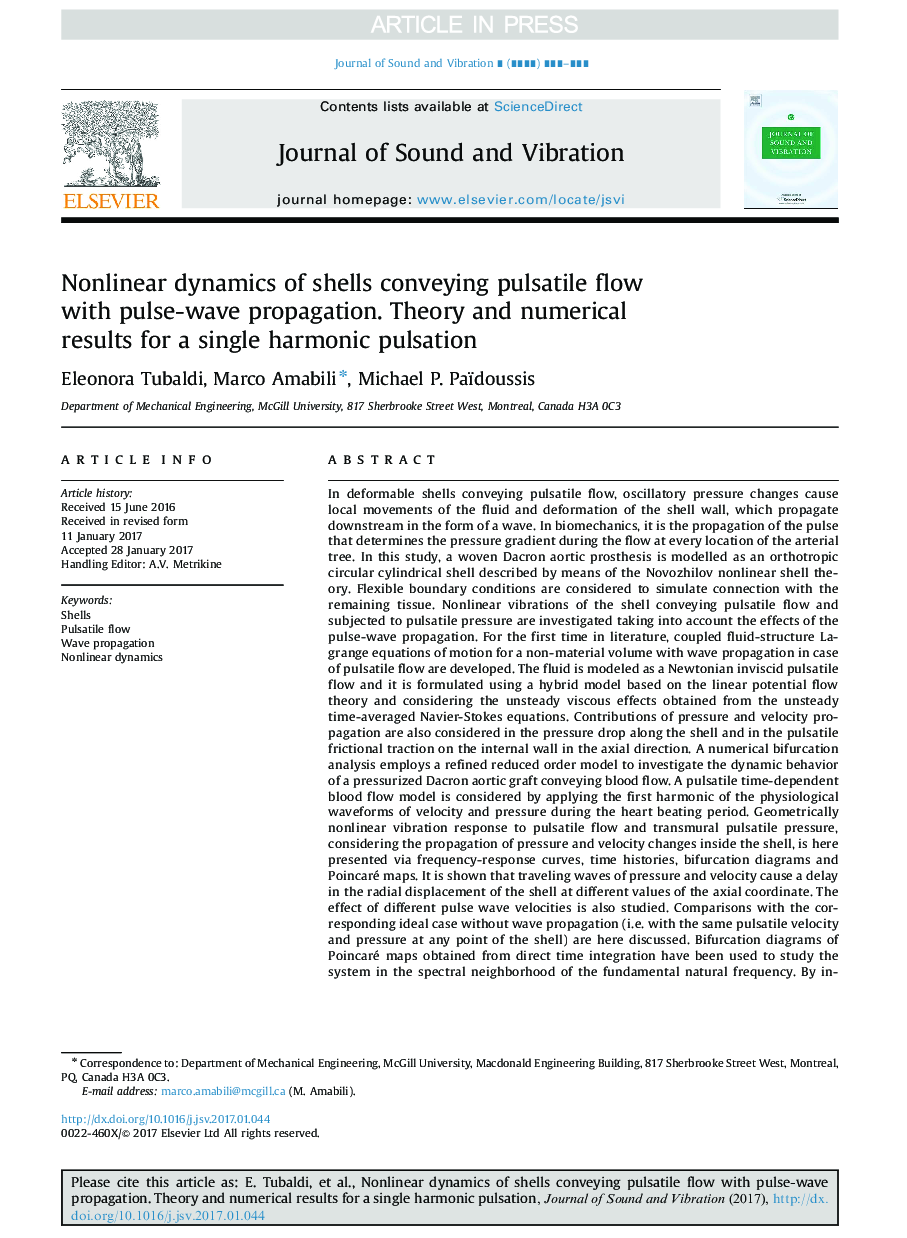| Article ID | Journal | Published Year | Pages | File Type |
|---|---|---|---|---|
| 4924282 | Journal of Sound and Vibration | 2017 | 29 Pages |
Abstract
In deformable shells conveying pulsatile flow, oscillatory pressure changes cause local movements of the fluid and deformation of the shell wall, which propagate downstream in the form of a wave. In biomechanics, it is the propagation of the pulse that determines the pressure gradient during the flow at every location of the arterial tree. In this study, a woven Dacron aortic prosthesis is modelled as an orthotropic circular cylindrical shell described by means of the Novozhilov nonlinear shell theory. Flexible boundary conditions are considered to simulate connection with the remaining tissue. Nonlinear vibrations of the shell conveying pulsatile flow and subjected to pulsatile pressure are investigated taking into account the effects of the pulse-wave propagation. For the first time in literature, coupled fluid-structure Lagrange equations of motion for a non-material volume with wave propagation in case of pulsatile flow are developed. The fluid is modeled as a Newtonian inviscid pulsatile flow and it is formulated using a hybrid model based on the linear potential flow theory and considering the unsteady viscous effects obtained from the unsteady time-averaged Navier-Stokes equations. Contributions of pressure and velocity propagation are also considered in the pressure drop along the shell and in the pulsatile frictional traction on the internal wall in the axial direction. A numerical bifurcation analysis employs a refined reduced order model to investigate the dynamic behavior of a pressurized Dacron aortic graft conveying blood flow. A pulsatile time-dependent blood flow model is considered by applying the first harmonic of the physiological waveforms of velocity and pressure during the heart beating period. Geometrically nonlinear vibration response to pulsatile flow and transmural pulsatile pressure, considering the propagation of pressure and velocity changes inside the shell, is here presented via frequency-response curves, time histories, bifurcation diagrams and Poincaré maps. It is shown that traveling waves of pressure and velocity cause a delay in the radial displacement of the shell at different values of the axial coordinate. The effect of different pulse wave velocities is also studied. Comparisons with the corresponding ideal case without wave propagation (i.e. with the same pulsatile velocity and pressure at any point of the shell) are here discussed. Bifurcation diagrams of Poincaré maps obtained from direct time integration have been used to study the system in the spectral neighborhood of the fundamental natural frequency. By increasing the forcing frequency, the response undergoes very complex nonlinear dynamics (chaos, amplitude modulation and period-doubling bifurcation), here deeply investigated.
Related Topics
Physical Sciences and Engineering
Engineering
Civil and Structural Engineering
Authors
Eleonora Tubaldi, Marco Amabili, Michael P. Païdoussis,
